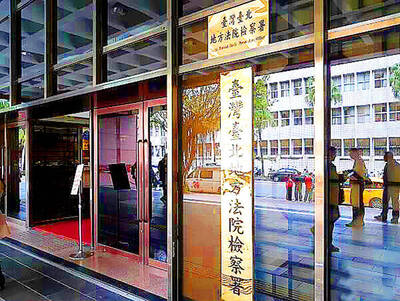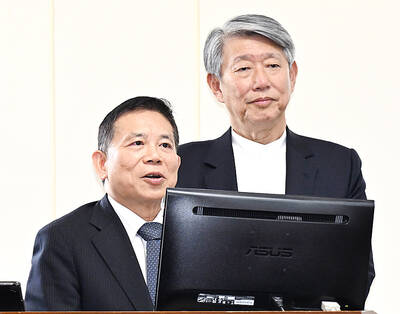US General Wallace Gregson, assistant secretary of defense for Asian and Pacific security affairs, said that President Barack Obama’s administration “will not waver in its commitment to provide those defense articles and services necessary for Taiwan’s self-defense.”
But he stopped well short of telling the US-Taiwan Defense Industry Conference in Charlottesville, Virginia, this week just what specific weapons systems would be offered.
Gregson didn’t mention the 66 F-16C/Ds that the Taiwanese military is anxious to buy from Washington. The closest he came to addressing the issue was to offer the generalized “commitment” promise.
“I’m sure many of you here tonight are quite eager to know more about what our administration considers to be the right tools for Taiwan,” he said.
Gregson, who went out of his way to emphasize the word “right,” said that he was not going to deal with the issue in detail.
“True and lasting security cannot be achieved simply by purchasing the next gleaming piece of advanced hardware. A defense strategy is most effectively implemented when you have the right tools. Taiwan’s defense strategy will therefore be most effective when its resource decisions are driven by a clear sense of its defense objectives and the most efficient means to achieve these objectives,” he said.
A senior military analyst in Washington said later that it was impossible to gauge from Gregson’s speech how the White House would handle Taiwan’s weapons requests.
On the one hand, Gregson seemed to be positive and ready to boost Taiwan’s military, but on the other he said nothing that might alarm Beijing ahead of Obama’s planned trip to China next month.
The analyst, who spoke on strict condition of anonymity, said that he did not expect any announcement on the F-16s before early next year.
The annual three-day meeting — organized by the lobby group US-Taiwan Business Council — focused on US-Taiwan defense and military cooperation and Taiwan’s defense and national security needs.
“A strong Taiwan will be less susceptible to coercion or intimidation and better able to engage the PRC [People’s Republic of China] with confidence. A strong Taiwan will be free to expand cross-strait economic, cultural and political ties without fear or reservation, and therefore everyone in the region — including the PRC — should view a strong Taiwan not as a threat but as a stabilizing force,” Gregson said.
“As a result of the PRC’s rapid economic growth and military modernization, Taiwan will never again have the luxury of relying on quantitative advantages over the PRC. Instead, Taiwan must look to its qualitative advantages through focusing on innovation and asymmetry,” he said.
“Taiwan should seek out new initiatives that will be more expensive for the PRC to defeat than they will be for Taiwan to employ. Asymmetry will not replace a layered defense or defeat PRC forces, but it can deter them from fully employing the advanced weapons they are developing and undermine their effectiveness,” he said.
General Chao Shih-chang (趙世璋), deputy minister of Taiwan’s Ministry of National Defense, told the conference that the only way to sustain the easing of cross-strait tension was to maintain defensive capabilities.
“We do have expectations for assistance that could be provided by friends and allies as new challenges that we have never faced before, [that will] emerge along with the many tasks of defense reform,” Chao said.
“Critical acquisitions, including F-16C/Ds, diesel submarines, utility helicopters, additional two units of PAC 111, could not be completed before the budgets expired, thus obstructing follow-on annual budgeting and policy implementation. I’m sure the officials in charge did not mean to see such a development,” he said.

Intelligence agents have recorded 510,000 instances of “controversial information” being spread online by the Chinese Communist Party (CCP) so far this year, the National Security Bureau (NSB) said in a report yesterday, as it warned of artificial intelligence (AI) being employed to generate destabilizing misinformation. The bureau submitted a written report to the Legislative Yuan in preparation for National Security Bureau Director-General Tsai Ming-yen’s (蔡明彥) appearance before the Foreign Affairs and National Defense Committee today. The CCP has been using cognitive warfare to divide Taiwanese society by commenting on controversial issues such as Taiwan Semiconductor Manufacturing Co’s (TSMC, 台積電) investments in the

INVESTIGATION: The case is the latest instance of a DPP figure being implicated in an espionage network accused of allegedly leaking information to Chinese intelligence Democratic Progressive Party (DPP) member Ho Jen-chieh (何仁傑) was detained and held incommunicado yesterday on suspicion of spying for China during his tenure as assistant to then-minister of foreign affairs Joseph Wu (吳釗燮). The Taipei District Prosecutors’ Office said Ho was implicated during its investigation into alleged spying activities by former Presidential Office consultant Wu Shang-yu (吳尚雨). Prosecutors said there is reason to believe Ho breached the National Security Act (國家安全法) by leaking classified Ministry of Foreign Affairs information to Chinese intelligence. Following interrogation, prosecutors petitioned the Taipei District Court to detain Ho, citing concerns over potential collusion or tampering of evidence. The

‘COMPREHENSIVE PLAN’: Lin Chia-lung said that the government was ready to talk about a variety of issues, including investment in and purchases from the US The National Stabilization Fund (NSF) yesterday announced that it would step in to staunch stock market losses for the ninth time in the nation’s history. An NSF board meeting, originally scheduled for Monday next week, was moved to yesterday after stocks plummeted in the wake of US President Donald Trump’s announcement of 32 percent tariffs on Taiwan on Wednesday last week. Board members voted to support the stock market with the NT$500 billion (US$15.15 billion) fund, with injections of funds to begin as soon as today. The NSF in 2000 injected NT$120 billion to stabilize stocks, the most ever. The lowest amount it

NEGOTIATIONS: Taiwan has good relations with Washington and the outlook for the negotiations looks promising, Minister of Economic Affairs J.W. Kuo said Taiwan’s GDP growth this year is expected to decrease by 0.43 to 1.61 percentage points due to the effects of US tariffs, National Development Council (NDC) Minister Paul Liu (劉鏡清) said at a meeting of the legislature’s Economics Committee in Taipei yesterday, citing a preliminary estimate by a private research institution. Taiwan’s economy would be significantly affected by the 32 percent “reciprocal” tariffs slapped by the US, which took effect yesterday, Liu said, adding that GDP growth could fall below 3 percent and potentially even dip below 2 percent to 1.53 percent this year. The council has commissioned another institution